#Ai agriculture
Explore tagged Tumblr posts
Text
Black Forest Labs
New Post has been published on https://thedigitalinsider.com/black-forest-labs/
Black Forest Labs
The startup powering image generation for xAI’s Grok.
Image Credit: Black Forest Labs
Next Week in The Sequence:
Edge 425: Our series about SSMs dives into Mamba, the best known SSM model. We review the original Mamba paper by Carnegie Mellon University and Princeton and dive into the GridTape framework for building LLM apps.
Edge 426: We discuss Gemma Scope and ShieldGemma, two new tools for interpretability and guardrailing released by Google DeepMind.
You can subscribe to The Sequence below:
TheSequence is a reader-supported publication. To receive new posts and support my work, consider becoming a free or paid subscriber.
📝 Editorial: Black Forest Labs
One of the ideas I like about The Sequence is that it helps bring awareness to AI labs that may not have the media profile or the billions in fundraising of the big AI incumbents but are truly doing unique work in AI research. Today, I’d like to talk about a small startup called Black Forest Labs, which is loaded with world-class AI talent. Even though you might not have heard of Black Forest Labs, there’s a chance you’ve interacted with their work.
Have you used xAI’s Grok’s new image generation features in X? If so, then you’ve been using Black Forest Labs’ models. Grok-2’s new image generation capabilities are powered by a model called FLUX.1, created by Black Forest Labs. Who are these guys? Well, what if I told you that they are part of the team behind the famous Stable Diffusion model and also contributed to research breakthroughs like VQGAN and Latent Diffusion?
Black Forest Labs’ main model is FLUX, which comes in three main variants:
FLUX.1 [schnell]: The fastest model, mostly used for local development and personal use.
FLUX.1 [dev]: An open-weight model for non-commercial usage.
FLUX.1 [pro]: The largest, state-of-the-art image generation model available via APIs.
The company recently raised $31 million from marquee firms like Andreessen Horowitz and General Catalyst, with participation from renowned angel investors such as Michael Ovitz and Gary Tan. Given their research talent, top-tier backers, and partnership with xAI, Black Forest Labs is one of the new startups likely to make some noise in the near future. For now, Grok-2 images are incredibly entertaining.
🔎 ML Research
Phi 3.5
Microsoft published the technical report around Phi 3.5 family of small language models. The new release includes Phi-3.5-MoE as well as new versions of Phi-3.5-mini, Phi-3.5-vision —> Read more.
FermiNet
Google DeepMind published a paper discussing FermiNet, a neural network architecture that can solve fundamental equations of quantum mechanics. FermiNet is the first neural network applied to computing the energy of atoms and molecules —> Read more.
DeepSeek-Prover-V1.5
DeepSeek-AI published a paper unveileing DeepSeek-Prover-V1.5, an LLM optimized for theorem proving. The model uses DeepSeekMath-Base as a baseline and fine-tunes it in theorem proving adn proof generation usign reinforcement learning —> Read more.
xGen-MM (BLIP-3)
Salesforce Research published a paper introducing xGen-MM, also known as BLIP-3, a framework for developing multimodal LLMs. The model showcases strong in-context learning capabilities and includes versions fine-tuned for instructions and safety —> Read more.
Hermes 3
Nous Research published the technical report behind its Hermes 3 family of models specialized in reasoning and creative capabilities. Hermes 3 scales up to 405B parameters and leverages a 128k context windows —> Read more.
Speculative RAG
Google Research published a paper detailing Speculative RAG, a technique that tries to address the effectiveness vs. efficiency dilemma in RAG solutions. The method uses a RAG fine-tuned LLM to complement a generalist LLM in RAG workflows —> Read more.
🤖 AI Tech Releases
Jamba 1.5
AI21 released Jamba 1.5, an SSM-Transformer model that enables long context handling capabilities —> Read more.
NVIDIA Llama-3.1 Minitron
NVIDIA open sourced Minitron, an 4B and 8B distilled versions of Llama 3.1 —> Read more.
🛠 Real World AI
Google AI Edge’s MediaPipe
Google provided a deep dive into the techniques for serving 7B parameter models in the browser —> Read more.
AI Infrastructure Videos
The videos from the @Scale AI infrastructure conference are now online —> Read more.
📡AI Radar
MidJourney released a new web experience for its image generation models.
OpenAI established a partnership with Conde Nast.
AI ERP platform Opkey raised a $47 million Series B.
AI-blockchain startup Story raised $80 million in a new round.
AI construction platform Trunk Tools raised a $20 million Series A.
Payments for AI agents platform Skyfire Systems, raised $8.5 million in a new round.
Dropbox acquired AI scheduling tool Reclaim.ai.
xAI started using SGLang for Grok 2 and became 2x faster.
Vectara released Portal, a new no-code interface for creating generative AI applications.
AI-legend Andrew Ng is transitioning to executive chairman in its role at Landing AI.
AI agent for business travel Otto raised $6 million.
Boston Dynamics new Atlas can do push ups.
AI ad platform Creatory raised a $10 million Series A.
Tidal, Google’s AI agriculture spinoff, raised new funding for its expansion plans.
AI fintech platform Magie raised $4 million.
LambdaTest introduced Kane AI, an AI testing assistant.
TheSequence is a reader-supported publication. To receive new posts and support my work, consider becoming a free or paid subscriber.
#agent#agents#agriculture#ai#ai agent#AI AGENTS#ai agriculture#AI Infrastructure#AI research#ai talent#APIs#applications#apps#architecture#Art#atoms#awareness#Black Forest Labs#Blockchain#browser#Building#Business#Carnegie Mellon University#catalyst#code#computing#conference#construction#DeepMind#development
0 notes
Text
AI Crop Yield Optimization
Unlock the potential of AI for enhanced crop yield optimization in agriculture with SBL's advanced solutions. Explore how our innovative technology can drive sustainable growth and profitability. Dive deeper into the future of farming here: https://www.sblcorp.ai/solutions/agriculture/ai-crop-yield-optimization/
1 note
·
View note
Text
Water scarcity and the high cost of energy represent the main problems for irrigation communities, which manage water for this end, making it available to agriculture. In a context of drought, with a deregulated and changing electricity market, knowing when and how much water crops are going to be irrigated with would allow those who manage them to overcome uncertainty when making decisions and, therefore, guide them towards objectives like economic savings, environmental sustainability, and efficiency. For this, data science and Artificial Intelligence are important resources.
Continue Reading.
71 notes
·
View notes
Text
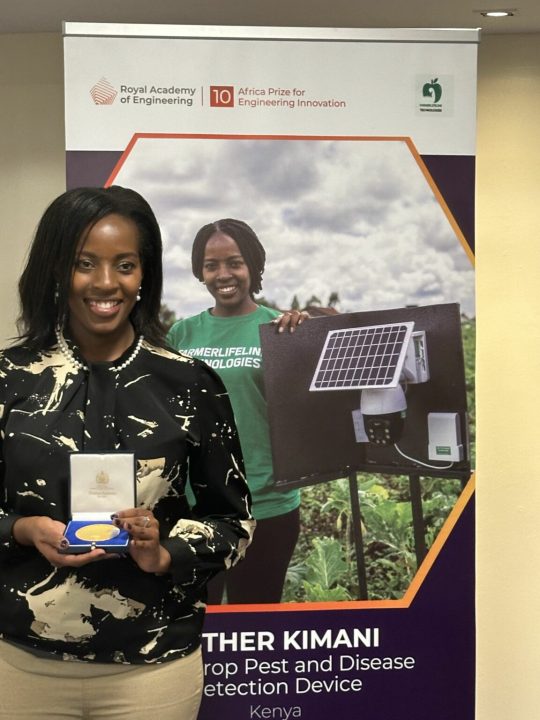
Esther Kimani, a computer programmer from Kenya, has won the UK’s Royal Academy of Engineering’s Africa Prize for Engineering Innovation. Her groundbreaking early crop pest and disease detection device wowed the judges, thanks to its remarkable ability to swiftly detect and identify agricultural pests and diseases. This innovative tool can reduce crop losses for smallholder farmers by up to 30% and boost yields by as much as 40%.
Harnessing the power of solar energy, the device employs computer vision algorithms and advanced machine learning to detect and identify crop pests, pathogens, or diseases, and the nature of the infection or infestation. Farmers receive notifications via SMS, making this an affordable alternative to traditional detection methods at just $3 per month—significantly cheaper than hiring drones or agricultural inspectors.
source
#solarpunk#solar punk#africa#ai#solarpower#agriculture#mobile tech#pest#solar power#solarpunk innovation#kenya#women#woman
17 notes
·
View notes
Text

#IFTTT#Flickr#ai#central#de#building#monochrom#ki#flicker#colorless#greyscale#interest#grau#beautiful#kithinktank#topazphotoai#eu#creativ#graustufen#challenge#nature#blackwhite#photoshop#look#flickr#agriculture#fooocuslightroom#sacho#barn#wood
10 notes
·
View notes
Text


page 564 panel a - oh dear, a deer. Two deer.
You know that feeling of starting awake in a dungeon, cold wet stone stabbing into your back, your neck so stiff you wonder if you'll ever lift your head again, the space so dark you wonder if you've lifted your head even now, and blasting through your brain like a spear thrust of fire -- I AM NOT TRYING TO EAT THE ASS OF ALL HUMAN HISTORY.
I must have been thinking about AI again, like all the entombed dungeon dwellers of old; the Duke of Rothesay, the Count of Monte Cristo, Anne Boleyn.
#economics#economists#economy#a dynamic modelof corn production sales and prices#prices#sales#dynamic#corn#agriculture#heartland#sellers of corn#dungeon#prison#prisoner#political prisoner#deer#roebuck#buck#doe#hunting season#rack#12 pointer#ai#human centipede
9 notes
·
View notes
Text
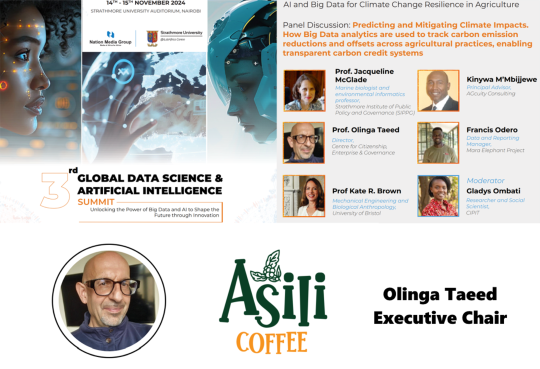
Join @olingataeed for Asili insights into how Fourth Industrial Revolution Technologies #4IR of AI blockchain IoT 5G Web3 are transforming agrotech #seed2urheart
2 notes
·
View notes
Text
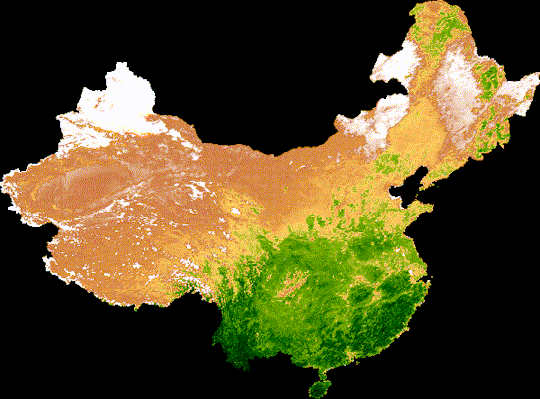
Um de nossos eixos de pesquisa são a elaboração de gifs de series temporais em NDVI ao longo do um ano para analises ambientais, no exemplo acima estuda-se o quanto o deserto de gobi da china avança e recua ao longo de um ano.
#geoprocessamento#geoprocessing#technology#techinnovation#ciencia#science#geology#agriculture#agritech#precisionagriculture#ai#artificial intelligence#machinelearng#website#maps#earth#satellite#drone#drone photography#remote monitoring#python#drought#amazon#amazonia#environment#pollution#ecology#ecosystems#climate#nature
2 notes
·
View notes
Text

2 notes
·
View notes
Text


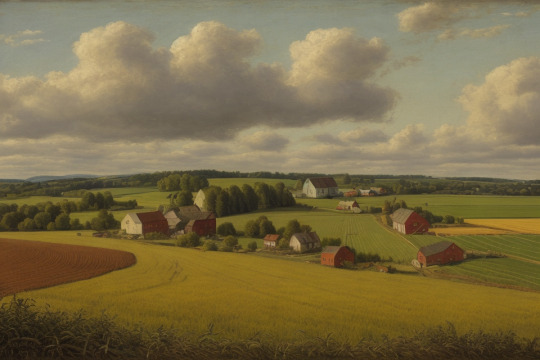

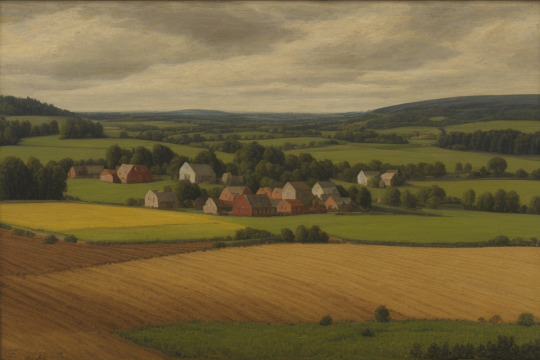

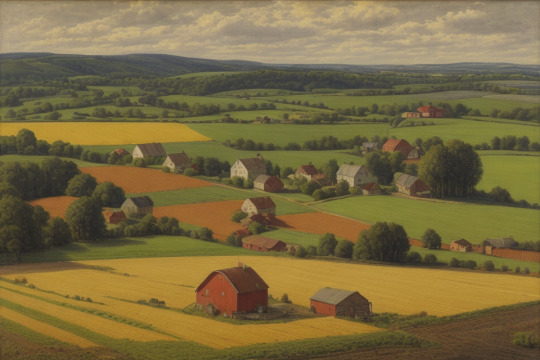
#ai generated#ai image#landscape#stable diffusion#painting#art#artwork#Fritz Syberg#farm#harvest landscape#fields#trees#hills#idyllic#farming#cloudy#clouds#grain#crops#houses#agriculture
3 notes
·
View notes
Text
#agricultural indie writing#indie author#indie books#fuck ai#people not ai#queer books#aelina isaacs#fantasy author#writing fantasy#writeblr#phantom and rook#writers on tumblr#how to grow a book#how to write a book#cozy books#cozy fantasy#queer romance#gay books#gay romance#found family
9 notes
·
View notes
Text
From Warehouses to Complex Environments: The Rise of GenAI-Powered Robotics
New Post has been published on https://thedigitalinsider.com/from-warehouses-to-complex-environments-the-rise-of-genai-powered-robotics/
From Warehouses to Complex Environments: The Rise of GenAI-Powered Robotics
The development of robotics has advanced significantly over the past few decades. It evolved from basic mechanical arms performing repetitive tasks to sophisticated systems powered by Generative AI (GenAI), which can handle complex functions. This transformation spans industries from warehousing to healthcare, agriculture, disaster response, and urban infrastructure.
Robots have fascinated humanity since early science fiction. Today, they are an integral part of many industries. The evolution from simple automation to advanced GenAI-powered robots marks a revolutionary shift where we utilize technology to enhance efficiency and solve complex problems.
The Evolution of Robotic Automation
Robotic automation began in the mid-20th century with the introduction of Unimate in 1961. Unimate revolutionized manufacturing by performing highly precise tasks like welding and material handling. It set the foundation for future advancements and demonstrated the potential of robotics to improve productivity and safety. Unimate could work tirelessly, perform tasks with consistent quality, and handle dangerous materials without risking human lives. This marked the beginning of the Industrial Robotics Age. Robots became integral to assembly lines in automotive manufacturing and other heavy industries.
Today, we are viewing a new phase in robotics driven by GenAI. Unlike traditional robots that follow pre-programmed instructions, GenAI-powered robots use advanced machine learning algorithms. They understand, learn from, and adapt to their environments. This shift from static automation to intelligent, adaptable systems brings significant advancements across various sectors.
GenAI-powered robots handle more complex tasks, make decisions in real-time, and adapt to changing conditions. They are invaluable in previously unpredictable environments. These robots use sensors and data analytics to gather information about their surroundings and performance. Machine learning algorithms process this data to help robots make better decisions and perform tasks more efficiently. This adaptability is essential in environments where conditions can change rapidly, such as hospitals, farms, and disaster zones.
How Robotics is Revolutionizing Warehousing?
One of the most visible impacts of GenAI-powered robotics has been in warehousing. The global warehousing and storage market, which was valued at $504.28 billion in 2023, is projected to expand at a Compound Annual Growth Rate (CAGR) of 5.7% during the forecast period, reaching a value of $1012.43 billion by 2030. The adoption of advanced robotics solutions drives this growth.
Companies like Amazon and Alibaba have been pioneers in this domain. For example, in Amazon’s fulfillment centers, robots navigate warehouse floors, pick items, and deliver them to human packers with incredible speed and accuracy. This integration has led to significant operational efficiency and cost savings. As of recent reports, Amazon employs over 750,000 robots in their fulfillment centers to assist employees, making the sites safer and enabling employee upskilling. These robots use AI to navigate complex warehouse layouts, avoiding obstacles and finding the most efficient routes to transport goods. The robots can lift and move shelves of products, bringing them to stationary human workers who then pack and ship the items. This system has dramatically increased order fulfillment speed, reduced errors, and lowered labor costs.
Similarly, Alibaba’s Cainiao logistics network uses AI-powered robots to manage over a million packages daily, ensuring quick and accurate deliveries even during peak shopping seasons. These robots can sort packages quickly, using AI to read labels and direct packages to the correct delivery zones. During Singles’ Day, Alibaba’s automated warehouse with 700 robots can process up to 800 million packages, significantly boosting efficiency.
Expanding into Complex Environments
The potential of GenAI-powered robotics extends beyond the controlled environments of warehouses into more complex fields. These robots significantly contribute to healthcare, agriculture, disaster response, and urban infrastructure.
Enhancing Precision in Healthcare
GenAI-powered robots are transforming surgery, diagnostics, and patient care in healthcare. Surgical robots like the da Vinci system enable minimally invasive procedures with enhanced precision, reducing recovery times and improving patient outcomes. According to recent data, the global surgical robots market was valued at $7.40 billion in 2023 and is projected to grow at a CAGR of 15.7%, reaching $27.51 billion by 2032.
AI-powered robots are also improving diagnostic capabilities. By analyzing medical images, these robots can detect abnormalities more accurately than human doctors, facilitating early detection of conditions such as cancer and improving survival rates.
Improving Efficiency in Agriculture
In agriculture, GenAI-powered robots address labor shortages and the increasing demand for food. The global agricultural robots market was valued at $7.21 billion in 2023 and is projected to reach $28.96 billion by 2032, growing at a CAGR of 16.7%. Robots like Harvest CROO use AI to pick strawberries, reducing labor costs and increasing productivity. Technologies like Blue River Technology’s “See & Spray” system use computer vision to target and eliminate weeds, promoting sustainable farming practices by reducing chemical usage. These robots increase efficiency and help promote sustainable practices by minimizing chemicals and optimizing resource usage.
Enhancing Safety and Improved Disaster Response
GenAI-powered robots are invaluable in disaster response. Capable of navigating hazardous environments, these robots can search for survivors and deliver critical supplies. During the 2020 Australian bushfires, AI-equipped drones played a crucial role in surveying affected areas and directing firefighting efforts, demonstrating the importance of robotics in emergencies. These robots enhance the safety and efficiency of disaster response efforts, enabling quicker and more effective rescue operations.
Improving Maintenance in Urban Infrastructure
GenAI-powered robots enhance maintenance and construction processes in urban infrastructure by inspecting bridges, tunnels, and buildings to identify structural issues early. The construction robotics market is projected to grow significantly, reaching $681.8 million by 2028, with a CAGR of 15.5%. The Hadrian X robot by FBR (Fastbrick Robotics) uses AI to lay bricks precisely and quickly, accelerating construction timelines and reducing waste. Asia-Pacific leads in adopting robotic automation due to significant government investments.
Robots in this sector are improving the safety, efficiency, and sustainability of urban infrastructure projects, helping cities manage their growth and maintenance needs more effectively.
Overcoming Challenges and Embracing the Future
Despite the remarkable advancements, integrating GenAI-powered robotics into complex environments poses several challenges, including technical limitations, regulatory hurdles, and ethical considerations.
One primary technical challenge is ensuring the reliability and robustness of AI algorithms in diverse and unpredictable environments, unlike controlled settings such as warehouses. Researchers are continually working on enhancing AI models to improve adaptability and decision-making capabilities.
Regulatory frameworks for AI and robotics are still evolving, necessitating clear guidelines from governments and industry bodies to ensure safe and ethical deployment. This includes addressing data privacy, cybersecurity, and the potential impact on employment.
Furthermore, the rise of GenAI-powered robotics raises ethical questions. The use of AI in decision-making processes, especially in healthcare and law enforcement, must be carefully regulated to prevent biases and ensure fairness. Additionally, concerns related to job displacement and the economic impact of automation on the workforce need to be addressed.
The Bottom Line
The integration of GenAI-powered robotics signifies a transformative shift across various industries, from warehousing to healthcare and urban infrastructure. While these advancements enhance efficiency, safety, and precision, they also present challenges such as technical reliability, regulatory hurdles, and ethical considerations.
Addressing these issues requires ongoing innovation, clear regulatory frameworks, and ethical guidelines to ensure that robotics technology benefits society while mitigating potential drawbacks. As we head toward this future, a balanced approach will be fundamental in utilizing the full potential of GenAI-powered robots.
#000#2023#agriculture#ai#ai agriculture#AI models#AI-powered#Algorithms#Alibaba#Amazon#amp#Analytics#approach#Asia#Asia-Pacific#Assembler Robots#automation#automotive#ava robotics#billion#Blue#buildings#Cancer#challenge#change#chemical#chemicals#cities#Companies#computer
0 notes
Text

Hi everyone! our first release has released! Check it out! You will find something useful for your business!
https://agrosoft.uz/promote
4 notes
·
View notes
Text
ADVANCED ROBOTICS: THE FUTURE OF ENGINEERING AUTOMATION
Advanced robotics is transforming engineering by automating complex tasks with AI and machine learning. Industries like healthcare, manufacturing, and logistics benefit from intelligent machines that enhance efficiency and precision. Unlike traditional automation, AI-powered robots adapt, learn, and improve over time. At M.Kumarasamy College of Engineering (MKCE), students engage with cutting-edge robotics through hands-on projects. The institution’s labs foster innovation in autonomous systems and adaptive algorithms. Emerging trends like swarm robotics and soft robotics are revolutionizing automation. MKCE integrates interdisciplinary learning, merging robotics with AI and mechanical engineering. Industry partnerships ensure students gain real-world exposure to advanced technologies. The college also emphasizes sustainable robotics solutions for a greener future. As robotics continues to evolve, MKCE remains at the forefront of this transformative field.
To know more : https://mkce.ac.in/blog/advanced-robotics-as-the-next-frontier-in-engineering-automation/
#private college#mkce college#best engineering college#top 10 colleges in tn#best engineering college in karur#engineering college in karur#mkce.ac.in#mkce#engineering college#libary#•#Advanced Robotics#Engineering Automation#AI in Robotics#Robotics and Machine Learning#Autonomous Systems#Industrial Automation#Robotics in Manufacturing#Healthcare Robotics#Agricultural Robotics#Logistics Automation
0 notes
Text
#ai#digital evolution#digital transformation#ai strategy#ai consulting#artificial intelligence#genai#generative ai#customer experience#customer experience transformation#digital strategy#technology#trends#innovation#business growth#business#successive digital#successive.tech#techblog#customer experience consulting company#blog#customer experience transformation company#agriculture#agritech industry#agriculture industry#farming#farminginnovation
0 notes
Text
Let's See The Benefits of AI in Farming: A Technological Revolution
#brian chapman portadown#farming technology#farming techniques#agriculture technology#agriculture drone#technology#AI in Farming
0 notes